How to find the best Oolong tea for yourself?
If you ask someone which type of tea comes to their mind first when the word is mentioned, they are very likely to answer ‘Black!’ or ‘Green!’…in our experience while asking people this question so far, even quite a few of the self-proclaimed tea enthusiasts cannot seem to name the tea we are introducing to you today - Oolong tea. It would not be false to say that Oolong, being one of the four ‘true’ teas - Black, Green, White, and Oolong - is not as well known amongst the public, but we are here to tell you all about it!
Contents
Origins of Oolong tea
Sometimes also known as ‘Black Dragon’ tea or ‘Wulong’ tea, the cultivation of oolong tea happens to be largely in certain provinces of mainland China and Taiwan, which is the second-largest exporter of oolong tea, presumably behind mainland China, considering that China exports the most well-known oolong tea cultivated in its very own Wuyi mountains. Oolong tea is said to have originated in the Fujian province in China (stretching back to about 1000 years), back then it was known as ‘Beiyuan’ tea. It was often given as a tribute to the emperor or the royal family, Beiyuan (oolong now) was one of the most well-known teas produced during the Song Dynasty in China.
But, recently, Oolong Tea from Sri Lanka (Ceylon) has also become popular across the world for its unique taste and distinctive aroma.

Oolong tea is often described as a tea which presents the drinker with a taste which is halfway between that of a black tea and green tea, if you are one of those people who find black tea or green tea a bit too extreme for your taste, then read on, perhaps we can help you find your cup of tea?
What is Oolong tea?
As mentioned previously, oolong tea is one of the 4 ‘true’ teas - meaning that it is one of the tea types which are all picked from the Camellia sinensis plant. So before you start wondering - ‘what is SO different about oolong tea if they all come from the same plant?’- let us explain.
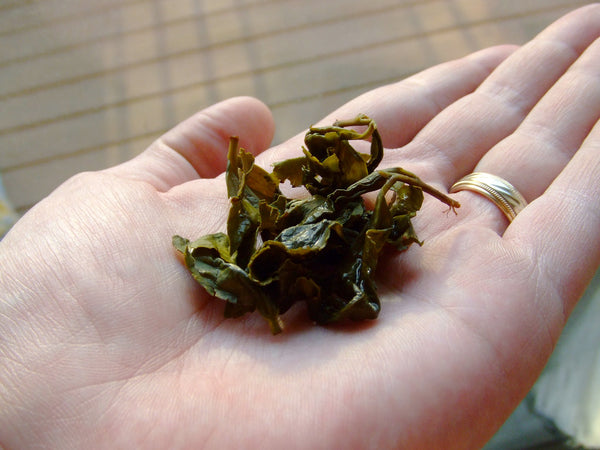
The thing is, the process of the production of these teas is what makes ALL the difference! ‘Oxidation’ is a step in the tea production process which refers to a series of chemical reactions that result in the browning of the tea leaves and the enhancement of the fragrance and flavour in the final teas. Oxidation may be either omitted, deliberately induced, controlled and stopped depending on the specific type of tea being produced (out of the 4 - black, green, white or oolong).
Cultivated in Fujian and Guangdong provinces of mainland China, Taiwan, and certain regions of Sri Lanka, oolong tea tends to have a very different oxidation process from that of the other 3 true teas produced alongside it. Where black tea is oxidized completely, and green and white tea is not oxidized, oolong tea meets them midway. The process of oxidation of oolong tea leaves is stopped before it is complete, leaving a semi-oxidized product, meaning that oolong tea contains the good qualities of both the oxidized tea and the unoxidized tea.
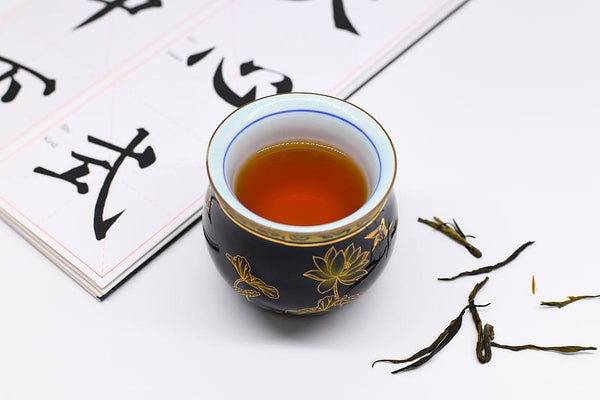
It is important to note that there is no uniform type of oolong tea, either.
The percentage of oxidation in oolong tea makes a great difference too - oxidation level of 5% and oxidation level of 55% most certainly give two very unique products with a difference in the aroma and flavour, oolong tea is amazingly versatile in that manner.
Appearance-wise, the oolong tea leaves differ from the other tea leaves in shape - the leaves are rolled and twisted into balls and long spindles, this step in the tea production process aids in the differentiation of the higher quality oolong tea leaves from the lower quality ones.
Oolong tea variants and its taste
The cultivation of oolong tea can be found in many of the south and southeastern countries in Asia, but the more prominent cultivators of it are mainland China, Taiwan, and Sri Lanka. We had previously talked about how there are variations within final versions of oolong teas due to the variation in the levels of oxidation the leaves go through. Additionally, the regions where the tea leaves are cultivated can also result in some variations in the final product of the oolong tea leaves.
- Chinese: The very place where the oolong tea is said to have originated from, Chinese oolong teas tend to be at a higher level of oxidation, and tend to be baked at a higher temperature when compared to other oolong teas. Due to a higher level of oxidation in the Chinese oolong tea, it provides a more intense flavour to the drinker, and the colour that it gives when it is brewed is much darker, much akin to that of certain black teas.
-
Taiwanese: Even though the cultivation of oolong tea in Taiwan started much later than in mainland China, the Taiwanese oolong tea is nowhere lesser in quality than the Chinese oolong. Taiwanese oolong is famous for all of its lesser-oxidized variations. The lower percentage in their oxidation level leads the Taiwanese oolong teas to provide a much more mellow and fruity flavour than the Chinese oolong, and the Taiwanese oolong brews up to give a light yellow or a fresh green colour, akin to certain green teas.
![Taiwanese Oolong]()
Taiwanese Oolong - Sri Lankan: Sri Lanka is one of the biggest exporters of teas in the world, the case is not any different when it comes to Oolong tea, either. teakruthi’s Pure Ceylon Oolong tea, for instance, is pure Ceylon loose leaf oolong tea which is picked from the Ruhuna region of Sri Lanka. This sweet-smelling blend gives a vibrant orange colour upon brewing and leaves the drinker with a mild and fresh flavour in their mouth.
Benefits of Oolong tea
So far we have told you of the origins, the creation, and the variants of oolong tea all over the world — but why should you care? To this question, we raise you a platter full of the goodness of oolong tea! Remember how we said that since oolong tea is semi-oxidized, it contains the positive aspects of both the oxidized black tea and the unoxidized green tea? You get the best of both worlds! Oolong tea provides a plethora of benefits to its drinkers:
Aids in losing weight
Oolong tea contains polyphenols — micronutrients which are packed with antioxidants — which boost metabolism and hence, reduce the amount of fat that is absorbed by your body from your daily diet. The very same polyphenols also are suspected to be the activators of certain enzymes which aid you in using more of the fat your body has stored up, for creation of energy. So if you are thinking of starting your fitness journey, do not forget to add oolong tea to your diet!
Also read - How to drink oolong tea for weight loss?
Benefits your digestive health
Oolong tea variants that go through a higher level of oxidation contain more caffeine (similar to black tea), and caffeine is said to aid in providing relief with constipation and, since we drink tea brewed in water, our body stays hydrated and the circulation in our body remains proper. If you face an issue like frequent constipation and want a healthy alternative to laxatives (which are probably not something you would want to use long-term, simply from the point of view of a consumer), we recommend oolong tea which has a higher level of oxidation - and therefore higher caffeine content.
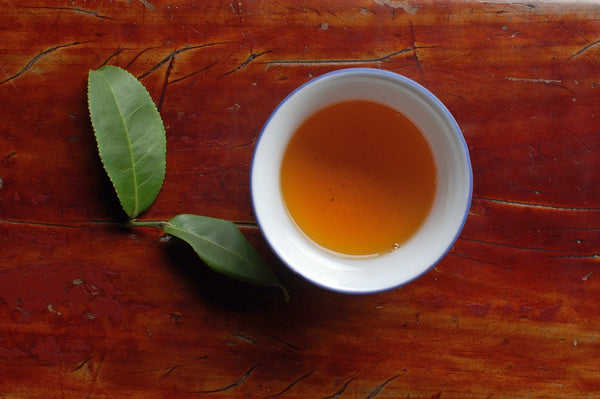
Is good for your Heart
Oolong tea variants which have been oxidized at a higher level, in particular, contain an immense amount of antioxidants, and the good qualities of antioxidants are such that they have been known to provide drinkers with a reduction in the chances of having a heart stroke. Not just a prevention of the worst-case scenario, oolong tea also cuts down on the risk of developing high blood pressure in regular drinkers.
Helps reduce your blood sugar
The antioxidants present in oolong tea (thanks to all the polyphenols) are said to cause a reduction in the level of insulin in our blood, hence, bringing down the blood sugar levels. Studies show that [add link] people who have diabetes can benefit from oolong tea if taken regularly. So if you are somebody who wants a healthy replacement for your daily sugar fix, we recommend swapping it with a cup of oolong tea!
Helps you relax and maintain focus
Now, if you are an avid tea-drinker, of course, a cup of tea is something you draw your daily dose of relaxation from, but do not roll your eyes at us just yet! Oolong tea contains an amino acid - 'theanine’ -which is known to help relieve anxiety, and boost attention span in the drinkers. Studies show that regular oolong tea drinkers had improved cognition, memory, and showed a significantly lower risk of brain function decline.
The best Oolong teas
Oolong tea is incredibly versatile! It can taste more like green tea or more like black tea, depending on what variant is used - this fact means that different oolong tea variants cannot be drunk the same way. Here, we give you two different but impeccable oolong teas, so you can choose what your mood calls for:
Oolong milk tea
‘Soothing’ would be the word for this one, oolong goes very well with milk added to it! Depending on the variant of the oolong tea used - the lower oxidation level, the better here - you would not even need to use any sweetener for the milk added. We recommend using Taiwanese oolong for making oolong milk tea since it is known for its sweet and fruity flavour. Just brew a mug, throw in a splash of milk or cream, and you have got oolong milk tea!
Of course, you may put add a dash of vanilla essence or a pinch of cinnamon if you are used to drinking bubble tea, but in our opinion, drinking fruity, flowery oolong milk tea by itself, without any flavour alteration, is a divine experience. Oolong milk tea is the best oolong tea for any season - just add cold milk and ice for summers, and warm milk during the winters!
Oolong lemon tea
All that talk of drinking oolong tea for weight loss is not just for nothing, we present to you - oolong lemon tea! We recommend using an oolong tea which tastes and appears similar to black tea, once again, we would specifically recommend teakruthi's Pure Ceylon Oolong tea. Just add 2 teaspoons of oolong tea into 8 ounces of hot water and let it steep for slightly longer - about 5-7 minutes. When the tea has steeped, strain it and add a teaspoon of freshly squeezed lemon juice and stir well, oolong tea will now accompany you on to your fitness journey!
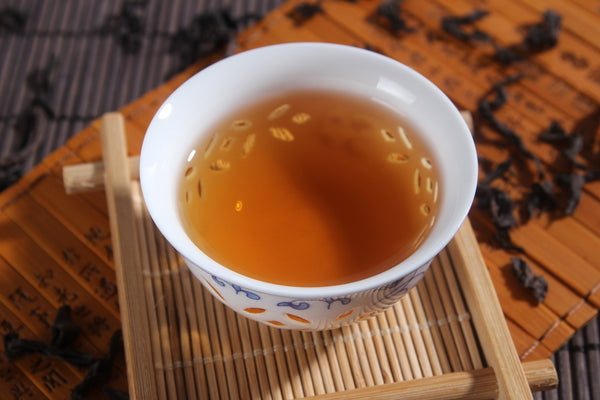
How to make Oolong tea?
We have been going on and on about the goodness of oolong tea and you have kept reading - we can only assume we have piqued your interest by presenting you with your new potential cup of tea, have we not? Let us say you are not an avid tea-drinker and you do not know how to make tea for yourself - worry not - we have promised to tell you ALL about oolong tea, that very much includes actually brewing a cup of it. Read on!
Time to brew the perfect cup of oolong tea for yourself! Grab about 2 teaspoons full of your oolong loose-leaf tea against every 8 ounces of water you use. We would recommend that you keep the water hot rather than boiling - meaning that you should let the water come to a boil first, then set it aside for 1-2 minutes, before adding your oolong tea leaves to it.
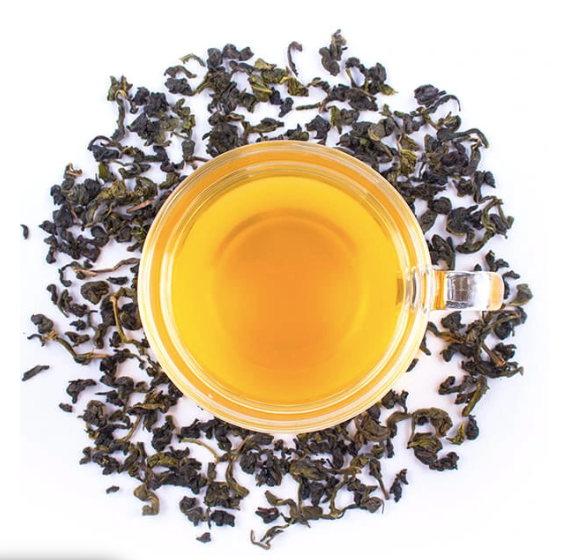
After you have put the leaves in the water, set it aside to let them steep for about 2 minutes (or 3, depending on the outcome after 2 minutes), and you have a freshly brewed, perfect cup of tea! It is important to note that oolong tea leaves of higher quality tend to be of use for steeping multiple times, but we would recommend that you stick to about 3 times when it comes to re-steepings, in order to enjoy their quality for a longer time.
Oolong tea side effects
All good things come with at least SOME downsides, if it were not so, it would be too good to be true in our opinion.
Teas are perhaps the most healthy and least artificial drinks besides plain old water, but too much of the more intense variations of oolong tea - the variants which are high in their caffeine content - can cause headaches, anxiety and problems in falling asleep.
Another side-effect which may arise with drinking too much of any caffeinated tea, really, is an iron deficiency. The flavonoids present in tea can lead to a significant reduction in the absorption of iron found in plant foods.
If you are someone who has low iron levels in your blood, we would recommend you try to reduce the amount of tea you drink, especially around mealtimes and include citrus fruits and leafy greens in your regular diet - these are indicators of foods being rich in Vitamin C, which is linked to higher absorption of iron in the bloodstream.

For women who are pregnant, we would recommend limiting the amount of caffeine you take in, by keeping the number of oolong tea you drink to a nice and balanced amount — 3 cups per day.
How to choose the best Oolong tea for yourself?
We have talked about the best way to brew oolong tea - but that comes AFTER you choose one from the market and bring it home, does it not? Our recommendation would be to avoid using tea bags - they tend to be of lower quality leaves than loose-leaf oolong tea, loose-leaf tea preserves the flavour and aroma much better than the teabag version of it.
Secondly, we recommend that you try to find a source of organic oolong tea, rather than tea which has been grown using excessive fertilizers and gene-modifications - the use of these can alter the fragrance, flavour and even the benefits of the tea, quite significantly.
Considering, both of these factors, we highly recommend our Pure Ceylon Oolong tea. Harvested from a single estate in the Galle District in Sri Lanka, our green Oolong tea is certified ‘ozone-friendly’. It’s manufactured with immense precision and care at every step and is semi-fermented to give you the perfect mild flavour that oolong tea is well-known for.

Well, there you have it! We have come to the end of this article - we hope this has helped you get to know more about the benefits of oolong tea. From choosing a variant for yourself to brewing one for yourself, remember, always prefer loose-leaf over teabags, and find organic sources for your oolong tea! We hope we have helped you find your new cup of tea!
References
- Study examining the efficacy of a green tea extract rich in catechin polyphenols and caffeine in increasing 24-h energy expenditure and fat oxidation in humans — https://www.ncbi.nlm.nih.gov/pubmed/10584049
- Study linking tea consumption and ischemic stroke risk in southern China — https://www.ncbi.nlm.nih.gov/pubmed/19478218
- Study depicting that Oolong tea increases plasma adiponectin levels and low-density lipoprotein particle size in patients with coronary artery disease — https://www.ncbi.nlm.nih.gov/pubmed/15331202
- Systematic review and meta-analysis of the acute effects of tea constituents L-theanine, caffeine, and epigallocatechin gallate on cognitive function and mood — https://www.ncbi.nlm.nih.gov/pubmed/24946991
- Study on tea consumption and cognitive impairment and decline in older Chinese adults — https://www.ncbi.nlm.nih.gov/pubmed/18614745
- A study demonstrating bioactive dietary polyphenolic compounds reduce nonheme iron transport across human intestinal cell monolayers — https://www.ncbi.nlm.nih.gov/pubmed/18716164
About the author


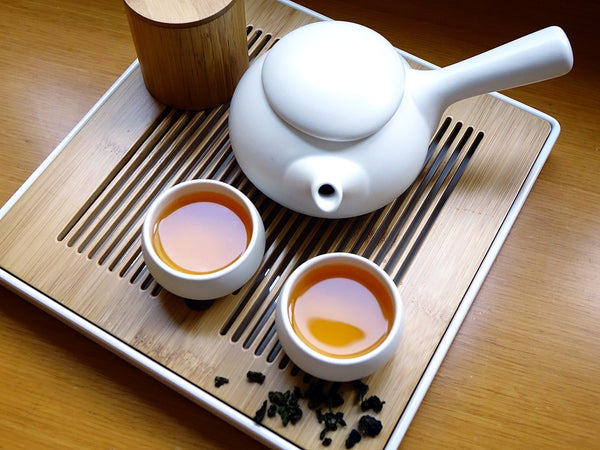




0 comments